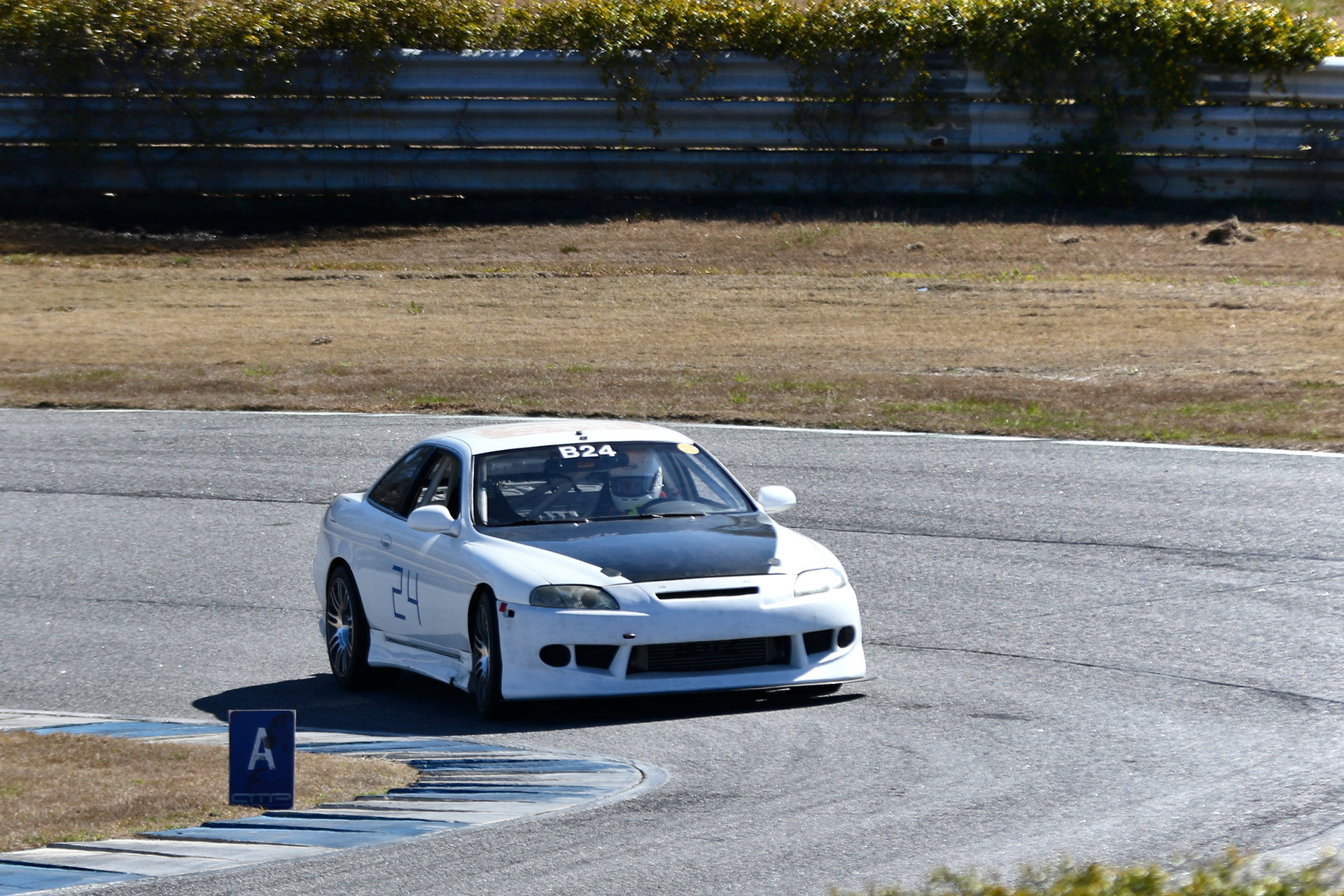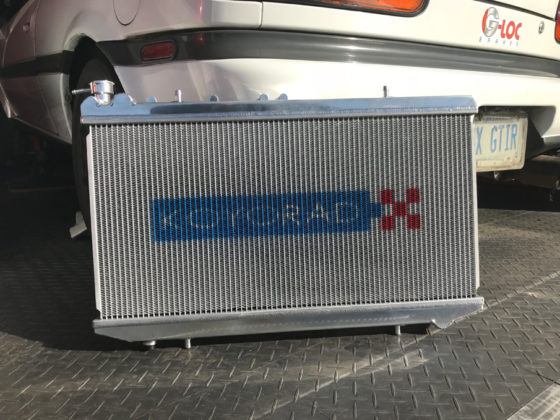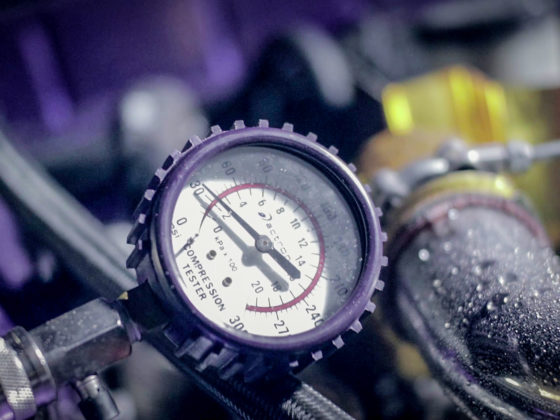
The AEM pressure sensor we were using for the brake pressure had a linear response, just like the oil and fuel pressure sensors. It just happened to have a range of 0-2000PSI, though. We didn’t get to fully test our configuration at the time of this writing, though, because we configured the sensor prior to running the car and then got preoccupied doing other things with the CAN script and never got back to it.
With the GPS sensor all wired up we quickly were able to get a GPS lock and validate that the RaceCapture was finding our location. But another thing we did not get around to was hooking up the bluetooth module to pair our phone to try and get the live telemetry working with https://podium.live — soon enough.
At this point the RaceCapture was configured about as good as it was going to get. It was time to move on to the AEM CD-7 dash.

The AEM CD-7 dash looks pretty neat even when it’s barely showing anything.
The CD-7 has an awful lot of really cool features, and we’re going to try to take advantage of as many of them as we can. One thing we noticed right away: We had wired the headlamp input to the CD-7 correctly, and when we turned on the headlamps the CD-7 auto-dimmed! Thank goodness for small victories.

Get comfortable with a view like this if you intend to program the dash by yourself.
Make no mistake, this is going to be the most time consuming programming part of the entire process. Even though a bunch of base pages are already included, there’s still a lot of work to make all the bilnky things blink and the number-y things… number. Just so you know, I easily have two full working days (16+hours total working time, or more) into tweaking, programming, customizing, and testing the dash, and I’m not done yet. Granted a lot of that was figuring out how to work with the software, and some of it was realizing that I had other problems. But do not expect that you will magically just connect things, load a file, and be done. Unless you maybe had both an AEM ECU and the CD-7 and were using an exact setup out of the box from them. AEM has done a lot of work to include many things for you, but it still takes work. They also have an active forum where you can get setups from others or get help.

Here’s AEM’s DashDesign software, complete with a bunch of our dashboard pages showing.
DashDesign comes with a bunch of example dashboards and dash pages, some of which look pretty funky, and others which look pretty utilitarian. Since we are building a race car, we stuck with the utilitarian route. We copied pages from the default, “Bar1”, and other included setups, to get to a base overall set of pages that we liked.
The pages are cycled with a button and, when the CD-7 boots up, it always displays page 1 first. This is considered the “startup” page, and it’s useful to make that one show all of the critical information you would want when warming up and idling the car. It’s also a good page for dyno time or other testing.
As you might expect, before we really got into anything, the first thing we did was make sure that we uploaded the latest firmware to the CD-7 dash. Then, we got into programming. We needed to make sure that the dash knew about all of the information first, and then we could tell the pages which things would display which bits of information.

Here’s the CAN input configuration page, which looks a little strange.
AEM’s DashDesign comes with a number of CAN database files that can be imported. These files already have the correct mappings of channels and bytes, so you don’t have to go through as much effort as with the RaceCapture. But that doesn’t mean there’s no effort. The strangeness you see is that AEM considers the ECU manufacturer CAN information proprietary, so they do not display the various IDs, bits, and bytes, even after you import them. Trust me, they’re working.
You can also see that I had to manually add the Fuel Level CAN word, because AEM’s database file did not include it. Off the screen are the custom CAN words I set up for the GPS data that I was sending from the RaceCapture.




5 comments
CD006!
Love the build, check out my similar build at https://www.facebook.com/pg/Danger-Racing-Group-1997107470615292/about/
John
I think my buddy Jay took a photo of your car and sent it to me! I was supposed to reach out to you but never got around to it. Small world!
Small world indeed. I have been keeping up with your build for a while. Very envious of the wiring job. The CD-7 is a great product but it is so new that there isn’t much guidance on how to customize. We may be swapping to an AIM product.
If you need any help with your CD-7 just let me know. Happy to dig into it. AEM tech support is also super helpful. Let me know next time you come through Atlanta!
Erik,
Double Win at AMP.
https://m.facebook.com/story.php?story_fbid=10156740661797346&id=102985012345
Hope you are doing well with your build. Think we are dropping the CD7 in favor of AIM product.